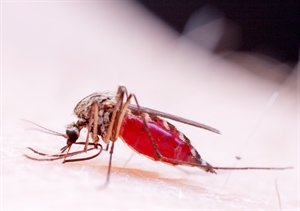Dengue fever and Chikungunya fever are two dangerous illnesses that are contracted through a mosquito bite.
What is Dengue fever?
Dengue fever, also known as breakbone fever because of the muscular, joint and bone pains it causes, mainly occurs in urban areas in the tropic and subtropics. Other symptoms include a red rash, pain behind the eyes, fever, nausea and headache.
There is no vaccine for Dengue fever and you can get it again if you’ve had it before. Most cases of Dengue pass within a week; but some cases turn into Dengue haemorrhagic fever – this is more likely if you have had Dengue before. Symptoms include abdominal pain, bleeding gums, vomiting blood, breathing problems, weak and fast pulse and drowsiness. Dengue haemorrhagic fever is a medical emergency. Seek help immediately.
What is Chikungunya fever?
The symptoms of Chikungunya fever include joint and muscle pains, rash, fatigue, nausea and headache. Most Chikungunya patients get well quickly, but a few people are unlucky and find themselves suffering from joint pain and inflammation weeks or years later.
There is no vaccine for Chikungunya. It occurs in Africa, Asia, the tropical parts of the Americas and the Caribbean and Pacific islands.
Avoid mosquito bites
In many regions where these diseases occur the authorities disrupt the mosquitoes’ lifecycle with spraying or fogging. As a matter of course residents will be covering water receptacles and clearing gutters and drains to control the larvae.
However, you also need to do your bit to dodge these infections. At your travel health appointment eight to six weeks before you leave, your nurse adviser will discuss mosquito-bite avoidance with you. Here is what you need to do:
Time it right
Note that if there is a risk of Dengue or Chikungunya, you should take precautions during the day as the mosquitoes that carry these viruses are active then.
Wear insect repellent
The most effective mosquito repellent is 20% DEET, which will protect you for about three hours. If you are swimming or sweating a lot, then it needs to be reapplied more often. Apply your sunscreen first, and then apply DEET. Annoyingly, DEET makes sunscreen less effective, but you should be all right at factor 30 or above. Keep it out of your eyes and mouth, and away from any broken skin. Travel Health Pro in its advice on insect and tick bite avoidance says that 20% DEET is safe during pregnancy and breastfeeding and for babies older than two months.
Dress for mosquito-avoidance
You can beat mosquitoes with loose-fitting clothing that has good limb coverage. You may wish to treat your cuffs with 20% DEET – but be aware that DEET can melt artificial fibres. By the way, double wrap your insect repellent in a plastic bag: it will ruin your luggage if the bottle leaks.
When you get home…
There may be a delay between the infective mosquito bite and symptoms appearing, which means you could fall ill after you return home. If you have been to an area where there are mosquito-borne illnesses such as Chikungunya and Dengue, treat a feverish illness with caution. Go and see your GP and let them know where you have been and that you could have been exposed to these two diseases.


Book Online